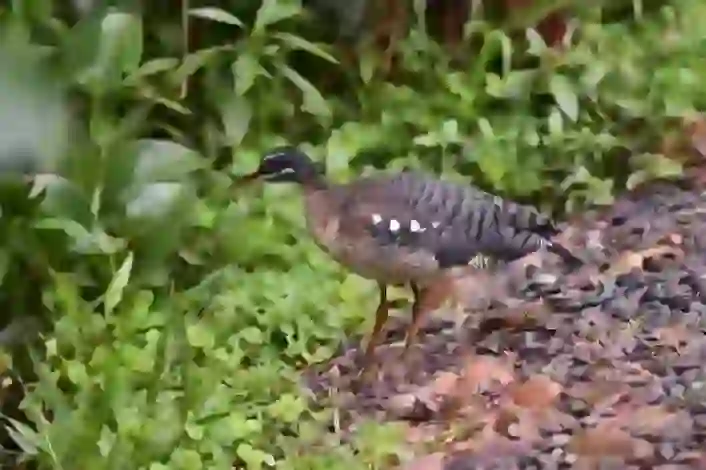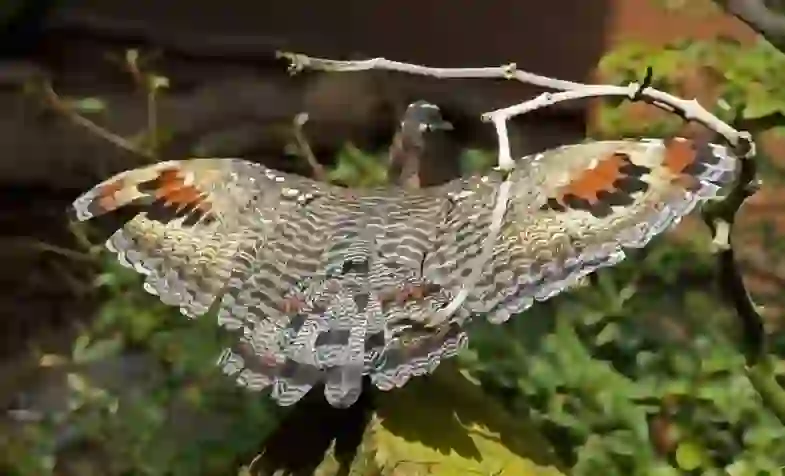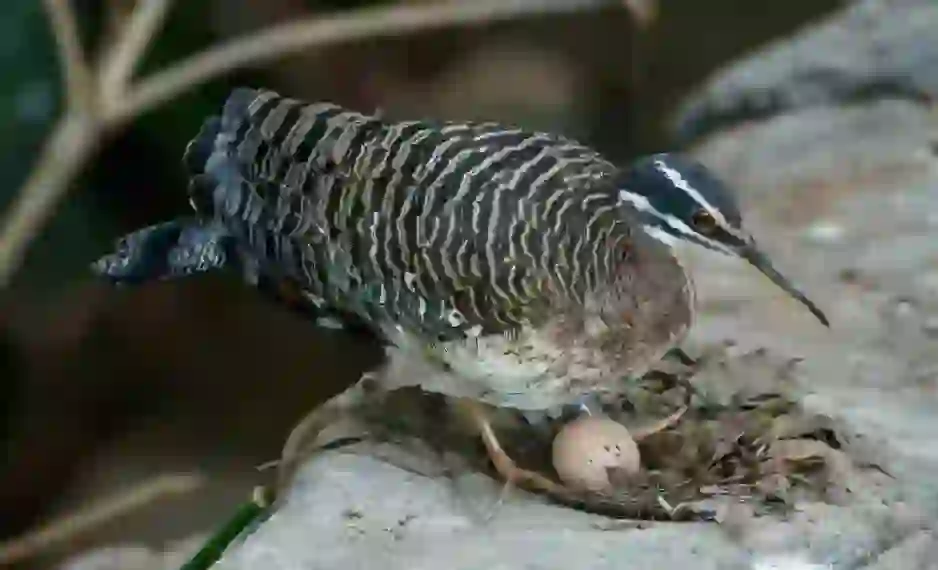
Sunbittern
Sunbittern
Sunbittern
Do you know the bird called the sunbittern? It's unlikely that many in Japan are familiar with it since it's not seen in this region. The sunbittern is very colorful and can be quite surprising in appearance, a characteristic that is also the origin of its name. This article introduces the unique and colorful sunbittern.
Sunbittern Basic Infomation
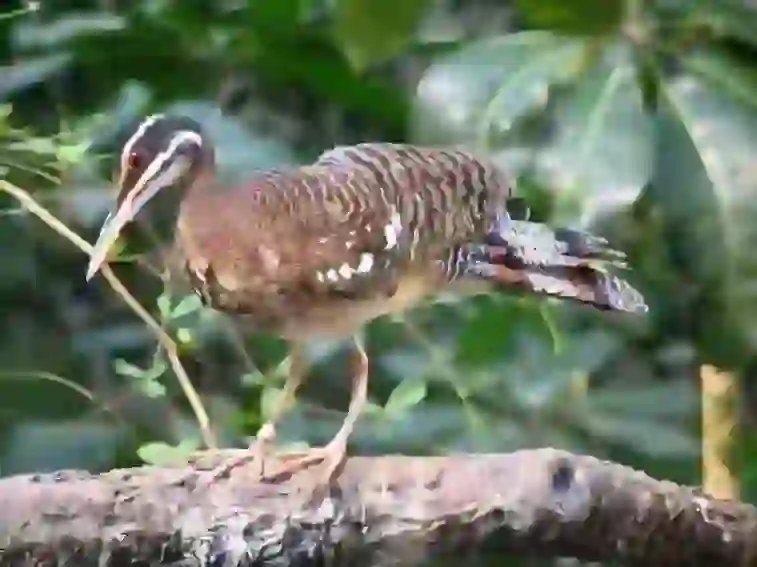
Class: Birds, Order: Sunbittern, Family: Sunbittern, Genus: Sunbittern
Total length: 42-48 cm
Weight: 175-225 g
The sunbittern lives in countries such as Ecuador, Guyana, Colombia, Suriname, Brazil, France, Venezuela, Peru, Bolivia, Guatemala, Costa Rica, Colombia, Nicaragua, Panama, Venezuela, Honduras, and Mexico. They only reside from Mexico to Brazil and are not seen in Japan. They are not migratory but remain in this region permanently.
The 'Sunbittern Genus Sunbittern Family' consists only of the sunbittern itself. Therefore, the 'Sunbittern Genus Sunbittern Family' is a category made exclusively for the sunbittern, giving it a sense of being a noble bird.
As mentioned at the beginning, the sunbittern is notable for its appearance. It has a black head with red eyes. Above and below the eye, there are white lines as if it has applied makeup, giving it a beautiful face. Combined with its red eyes, you might be startled when it looks at you.
The neck and chest are yellow with fine black patterns. The wings are especially vibrant with colors including gray, black, red, white, yellow, and chestnut, forming striped and speckled patterns. The tail also displays similar hues, covering the body in colorful shades.
When the wings are spread, eye-like patterns appear on both wings. The colors that seem speckled when the wings are closed form these eye-like patterns.
The sunbittern has long legs, neck, and beak. The upper beak is gray, and the lower beak is orange-red, similar to the legs. Not only the feathers but also other parts of the body display colorful hues.
While birds that live in watery or damp places often have webbed feet, the sunbittern does not. However, it is adept at swimming.
Sunbittern Q&A

What is the origin of the name 'Sunbittern'?
As previously mentioned, the name 'Sunbittern' directly relates to the distinctive patterns on its wings. In Japanese, it's called 'Janomedori', which translates to 'snake-eye bird', named so because the patterns revealed when it spreads its wings resemble snake eyes.
The English name 'Sunbittern' might derive from the bird's vibrant appearance, which is as colorful as the sun. The perception of its appearance differs between Japan and other countries, but its striking beauty universally inspires the names it's given.
Did you know that birds, like flowers, have symbolic meanings? For the sunbittern, it symbolizes 'unexpected talent', likely referring to the surprising patterns that appear only when it spreads its wings.
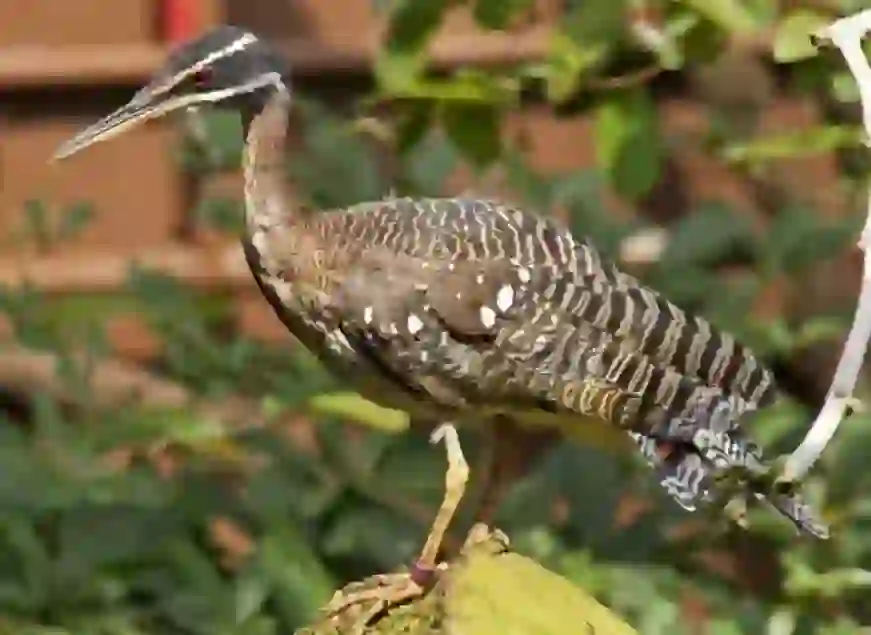
Why does the sunbittern live there?
The sunbittern inhabits tropical rainforests up to an elevation of 1830 meters, which is about half the height of Mount Fuji, although still quite elevated. They live near rivers, ponds, and damp grasslands within these forests.
Sunbitterns might be seen alone, in pairs, or with their family, though they typically do not form large flocks. Their activities peak during the day, and at night they rest, mainly on the ground or in trees. While they are capable swimmers and fliers, they seldom choose to fly, perhaps to avoid startling potential predators. However, they will fly to escape if threatened.
Interestingly, sunbitterns rarely vocalize. When they do, their calls are not loud but rather serene and extended, perhaps communicating quietly with family members through subtle cues or even a form of telepathy.
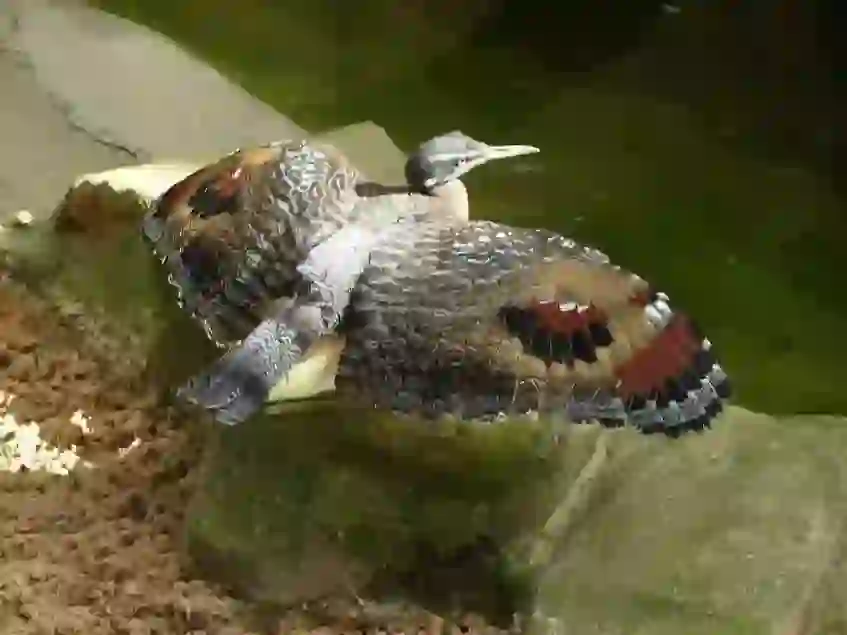
What does the sunbittern eat?
Sunbitterns feed on insects, spiders, crustaceans, mollusks, fish, frogs, and tadpoles. Their habitat near rivers and damp grasslands provides a diverse diet.
They use their long necks to help locate food, moving slowly and methodically while keeping their bodies parallel to the ground. This posture allows them to see food from afar and snatch it up using their long beaks.
Their long legs also play a crucial role, enabling them to move silently and efficiently while hunting, making the most of their unique body structure.
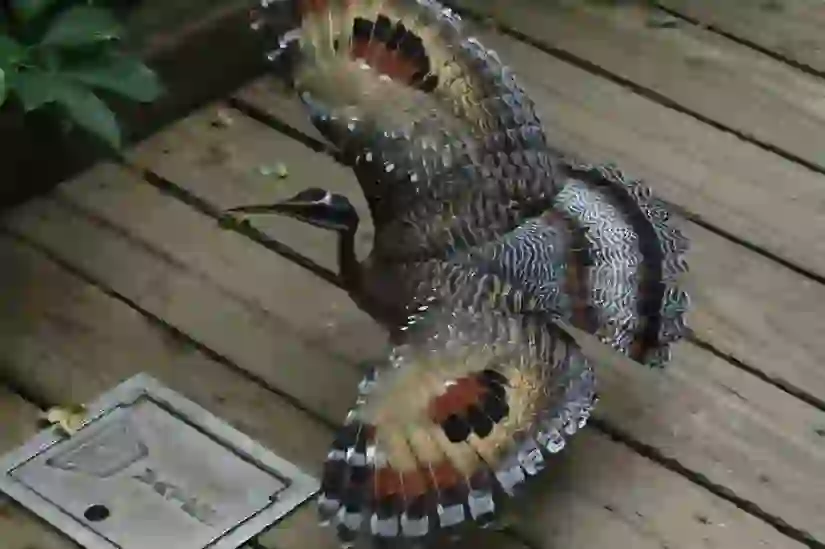
Is the sunbittern's colorful appearance a disadvantage for avoiding predators?
While it might seem that their vivid colors would make sunbitterns easy targets for predators, their coloration actually helps them blend into the colorful backdrop of the tropical rainforest. Just as an artist uses a variety of colors to depict nature, the sunbittern's plumage mimics the varied hues found in their natural habitat, effectively camouflaging them.
Additionally, their quiet movement minimizes their presence, making them harder for predators to detect despite their colorful appearance.
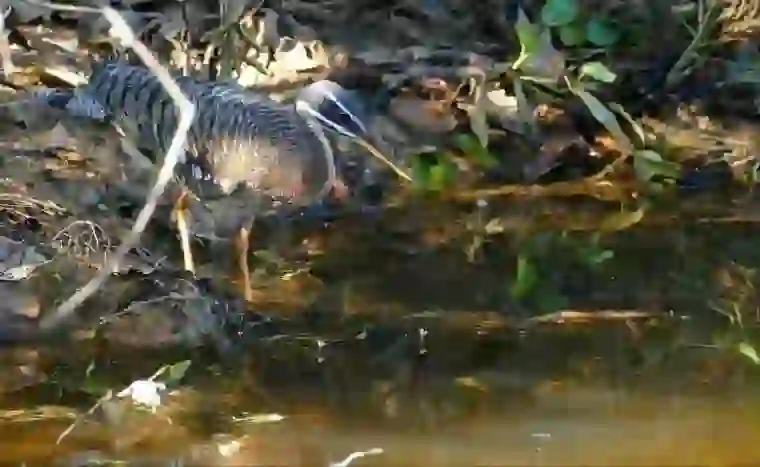
Does the sunbittern only spread its wings when flying?
Besides flying, sunbitterns spread their wings for intimidation and courtship. They display their striking wing patterns when threatened or to startle predators, making themselves appear larger and more formidable.
During courtship, they also spread their wings to show off their size and patterns, which are crucial for attracting mates. Similarly, parents might spread their wings to protect their young, mimicking larger birds to scare off potential threats.
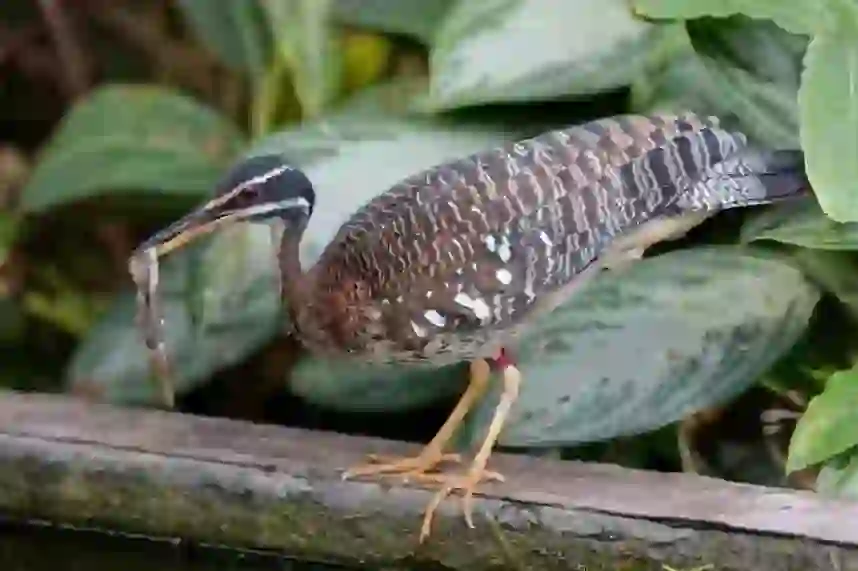
How do sunbitterns reproduce?
Sunbitterns breed during the rainy season. After successful courtship, they build nests in trees near water bodies, collaborating to create the nest from dry leaves, moss, and mud. They lay 1-3 eggs, which are pale yellow with gray or black speckles.
Both parents share the duty of incubating the eggs for about 30 days. After hatching, both parents care for the chicks, which quickly begin to grow feathers similar to adult plumage. Though they change feathers rapidly, the chicks still rely on their parents for food until they are ready to leave the nest, which usually happens between 21 to 30 days after hatching.

Would you like to become a part of the 'Animalbook.jp'?
Turn your knowledge into Q&A and share it with the world. ※Publication will be activated after purchase. Let's share information together!
Sunbittern Type of List
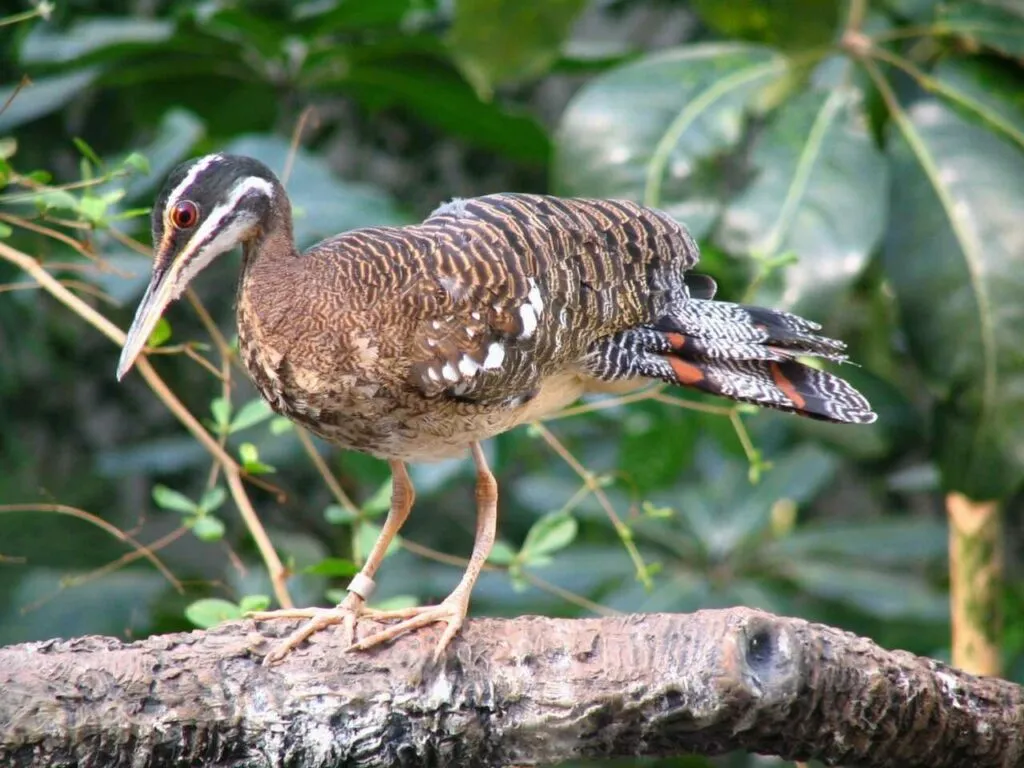
- Sunbittern
Information
Congratulations! You are the first commenter!

Create Your Favorite List!
Sunbittern
Save the animals you love! Build your own list to quickly revisit your favorites later.

Would you like to leave a comment?
※Please note: This is for the purchase of rights to post comments within the article.
Find Your Favorites!
Our shop offers a unique and attractive selection of goods themed around various animals.
Sunbittern References

- Wikipedia ジャノメドリ https://ja.wikipedia.org/wiki/ジャノメドリ
- Wikipedia 鳥類 https://ja.wikipedia.org/wiki/鳥類
- HPHP(Hosaka Personal Home Page) ジャノメドリ(蛇の目鳥) http://interesting.world.coocan.jp/hphp/b/kbpc/i/i-0592.htm#:~:text=ジャノメドリ(Sunbittern:蛇の目烏),番で生息します。
- コトバンク https://kotobank.jp/word/ジャノメドリ-76150
- YAHOO!JAPANきっず https://kids.yahoo.co.jp/zukan/animal/kind/birds/0057.html
- 鳥類動画図鑑 http://chouruidouga.web.fc2.com/janomedori.html
- Birdist Bee http://www.birdist-bee.com/worldbirds/2013/05/post-36.html
- FIELDING NOTE 鳥屋が生き物についてあれこれと好き勝手に語るブログ。 http://hitaki-ikimono.cocolog-nifty.com/blog/2020/07/post-5dffc1.html
- モノコトバ『モノ』の言葉を伝えるメディア https://monokotoba.com/archives/september-word/6779
Sunbittern Introduction of media used

出典:https://commons.wikimedia.org/wiki/File:London_Zoo_01215.jpg

出典:https://commons.wikimedia.org/wiki/File:Eurypyga_helias_1.jpg

Help Enrich Our Animalbook.jp with Your Media!
We are constantly looking to expand and enrich our Animalbook.jp with amazing photos and videos of animals. If you have any media that you'd like to share, please contribute and help us showcase the beauty and diversity of the animal kingdom. Your submissions will be credited and featured in our encyclopedia, reaching a wide audience of animal lovers.
















